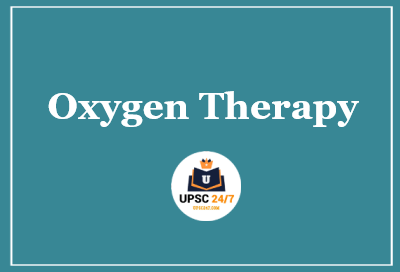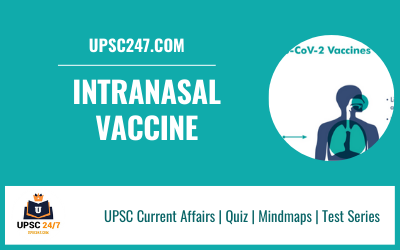Oxygen Therapy UPSC | Procedure | Indications | Types – The second surge in Covid-19 cases has seen a huge rise in the demand for supplemental oxygen. There Is a Huge Demand For Oxyden In India . More Number Of patients Are Demanding O2 For Treatment. Covid-19 patients need oxygen support when shortness of breath progresses to a more acute condition.
Most of the Covid-19 patients have a respiratory tract infection and in the severe cases their symptoms includes shortness of breath. In a small proportion of such cases, this can progress to a more severe and systemic disease characterised by Acute Respiratory Distress Syndrome (ARDS).

What Is Oxygen Therapy And Who Need It ? Oxygen Therapy UPSC
Oxygen therapy, also known as supplemental oxygen, is the use of oxygen as a medical treatment.
This can include for low blood oxygen, carbon monoxide toxicity, cluster headaches, and to maintain enough oxygen while inhaled Anesthetics are given.
Long-term oxygen is often useful in people with chronically low oxygen such as from severe COPD or cystic fibrosis.
Oxygen can be given in a number of ways including nasal Cannula, face mask, and inside a Hyperbaric chamber.
- Oxygen is required for normal cell metabolism. Excessively high concentrations can cause oxygen toxicity such as lung damage or result in respiratory failure in those who are predisposed.
- The use of oxygen in medicine became common around 1917.
- It is on the World Health Organization’s List of Essential Medicines.
Vaccine Hesitancy In India UPSC | Reasons | Solution |
In what conditions is oxygen used in Covid-19 Treatment ?
- According to the clinical management protocol, under the following conditions persons require oxygen:
- a person is suffering from moderate disease;
- a person is diagnosed with pneumonia with no signs of severe disease;
- presence of clinical features of dyspnea (shortness of breath) and/or hypoxia (no oxygen supply at the tissue level);
- fever, cough, including SpO2 (oxygen saturation level) less than 94% (range 90-94%) in room air;
- When respiratory distress of the patient cannot be alleviated after receiving standard oxygen therapy, high-flow nasal cannula oxygen therapy (HFNO) or non-invasive ventilation can be done.
- But patients with hypercapnia (exacerbation of obstructive lung disease), hemodynamic instability, multi-organ failure, or abnormal mental status should generally not receive HFNO.









